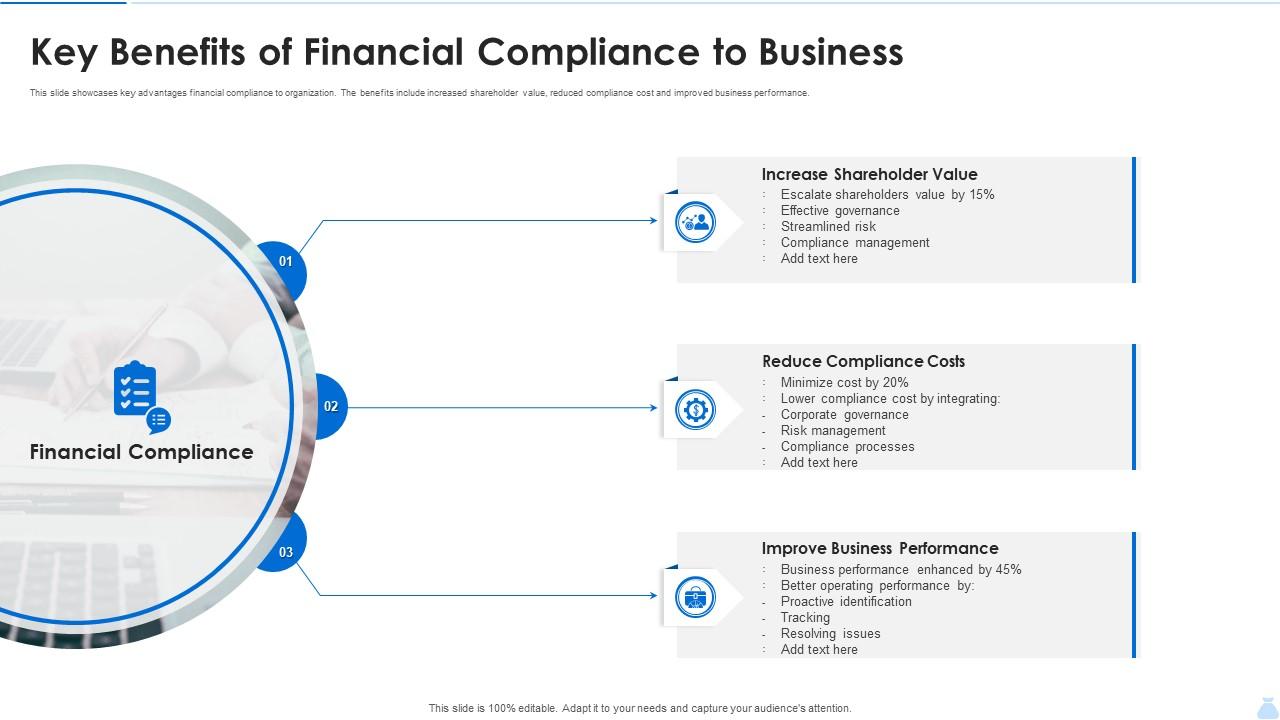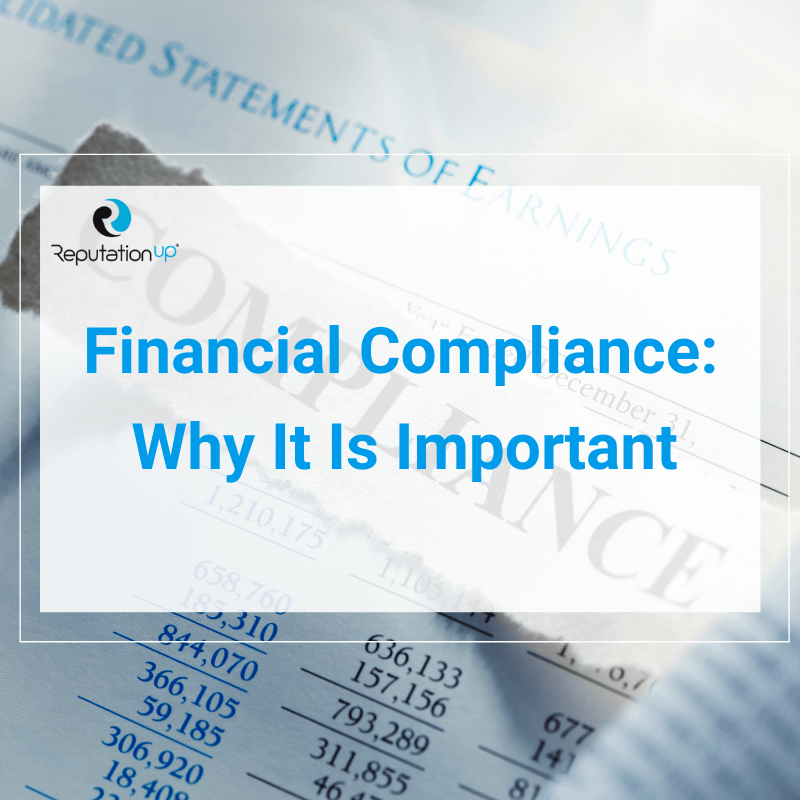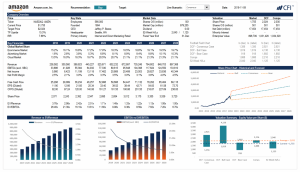
Key Areas of Financial Compliance

Maintaining financial compliance is crucial for the long-term health and sustainability of any business. A robust program safeguards against legal penalties, protects reputation, and fosters investor confidence. This section will Artikel key areas and best practices for establishing and maintaining a strong financial compliance framework.
Core Components of a Robust Financial Compliance Program
A comprehensive financial compliance program goes beyond simply adhering to regulations. It requires a proactive and integrated approach encompassing several key components. These components work together to ensure accurate financial reporting, effective internal controls, and a culture of ethical conduct. A lack in any one area can significantly weaken the overall effectiveness of the program.
- Clear Policies and Procedures: A well-defined set of policies and procedures provides a framework for all financial activities, ensuring consistency and transparency. These should cover areas such as accounting methods, expense reimbursements, and conflict of interest protocols.
- Regular Training and Education: Employees at all levels must receive regular training on relevant financial regulations and internal policies. This ensures everyone understands their responsibilities and the potential consequences of non-compliance.
- Effective Internal Controls: A system of checks and balances designed to prevent errors and fraud. These controls should be regularly reviewed and updated to reflect changes in the business environment and regulatory landscape.
- Independent Audits: Regular independent audits provide an objective assessment of the company’s financial statements and internal controls. This helps identify weaknesses and ensure compliance with relevant regulations.
- Documentation and Record Keeping: Maintaining meticulous records is essential for demonstrating compliance. All financial transactions should be properly documented and easily accessible for review.
The Role of Internal Controls in Maintaining Financial Compliance
Internal controls are the backbone of any effective financial compliance program. They act as a safeguard against errors, fraud, and non-compliance. These controls are designed to ensure the accuracy and reliability of financial reporting, protect company assets, and promote operational efficiency. Robust internal controls reduce the risk of material misstatements in financial reports and enhance the credibility of the organization.
- Segregation of Duties: Assigning different individuals to handle various aspects of a transaction prevents any single person from having complete control and reduces the opportunity for fraud.
- Authorization and Approval Processes: Establishing clear authorization levels for transactions ensures that all financial activities are properly vetted and approved before execution.
- Reconciliations: Regularly reconciling bank statements and other accounts helps identify discrepancies and potential errors early on.
- Physical Controls: Implementing physical security measures to protect assets and sensitive financial documents.
- IT Controls: Implementing security measures to protect financial data stored electronically, including access controls, encryption, and data backups.
Best Practices for Establishing and Maintaining Accurate Financial Records
Accurate financial records are essential for making informed business decisions, complying with regulations, and attracting investors. Maintaining accurate records requires a systematic approach and a commitment to accuracy and detail. Failure to maintain accurate records can lead to significant financial and legal consequences.
- Use of Accounting Software: Utilizing accounting software streamlines the recording process, reduces errors, and facilitates reporting.
- Chart of Accounts: Implementing a well-defined chart of accounts ensures consistent categorization of transactions.
- Regular Data Backup: Regularly backing up financial data protects against data loss and ensures business continuity.
- Document Retention Policy: Establishing a clear document retention policy ensures that important financial documents are retained for the appropriate period.
- Periodic Review and Reconciliation: Regularly reviewing and reconciling financial records helps identify and correct errors.
Checklist for Regular Financial Compliance Reviews
Regular reviews are crucial for ensuring the ongoing effectiveness of a financial compliance program. A checklist helps to ensure that all critical areas are examined and potential issues are identified and addressed promptly. This checklist should be tailored to the specific needs and circumstances of the business.
| Area | Review Frequency | Checklist Items |
|---|---|---|
| Internal Controls | Quarterly | Review segregation of duties, authorization processes, reconciliations, and IT controls. |
| Financial Records | Monthly | Verify accuracy of financial statements, review account reconciliations, and check for completeness of documentation. |
| Compliance with Regulations | Annually | Review compliance with all relevant tax laws, accounting standards, and industry-specific regulations. |
| Policies and Procedures | Annually | Review and update all policies and procedures to reflect changes in the business environment and regulatory landscape. |
| Employee Training | Annually | Assess the effectiveness of employee training programs and identify areas for improvement. |
Specific Regulations and Standards

Navigating the complex landscape of financial compliance requires a thorough understanding of the various regulations and standards that govern financial reporting and practices. Failure to comply can lead to significant penalties, reputational damage, and even legal action. This section will delve into some key regulations and standards, highlighting their implications for businesses.
Sarbanes-Oxley Act (SOX) Implications for Publicly Traded Companies
The Sarbanes-Oxley Act of 2002, enacted in response to major corporate accounting scandals, significantly impacts publicly traded companies in the United States. SOX aims to protect investors by improving the accuracy and reliability of corporate disclosures. Key provisions include enhanced corporate responsibility for financial reporting, stricter internal controls, and increased auditor independence. Companies must establish robust internal controls over financial reporting, undergo independent audits, and certify the accuracy of their financial statements.
Non-compliance can result in substantial fines, legal action, and damage to the company’s reputation. For example, a company failing to maintain adequate internal controls could face significant penalties from the Securities and Exchange Commission (SEC).
Comparison of GAAP and IFRS
Generally Accepted Accounting Principles (GAAP) and International Financial Reporting Standards (IFRS) are the two major sets of accounting standards used globally. GAAP, primarily used in the United States, is rules-based, offering specific guidance on accounting treatments. IFRS, used internationally, is principles-based, providing a framework for accounting that allows for more flexibility and professional judgment. A key difference lies in the treatment of certain assets and liabilities; for instance, the accounting for inventory or the recognition of revenue can differ significantly under GAAP and IFRS.
Companies adopting IFRS often face challenges in adapting their accounting practices and internal controls to meet the new requirements. The choice between GAAP and IFRS can impact a company’s financial reporting, investor relations, and cross-border transactions.
Examples of Industry-Specific Regulations
Many industries face unique regulatory requirements affecting their financial compliance. The healthcare industry, for example, is subject to regulations such as the Health Insurance Portability and Accountability Act (HIPAA), which mandates specific security and privacy measures for protected health information (PHI). Non-compliance with HIPAA can result in significant fines and legal repercussions. Similarly, the banking industry operates under stringent regulations designed to maintain financial stability and prevent fraud, including regulations from bodies like the Federal Reserve and the Office of the Comptroller of the Currency (OCC).
These regulations cover areas such as capital adequacy, risk management, and anti-money laundering (AML) compliance. Failure to adhere to these regulations can lead to substantial penalties and operational disruptions.
Key Financial Regulations Comparison
| Regulation | Scope | Penalties for Non-Compliance | Relevant Agency |
|---|---|---|---|
| Sarbanes-Oxley Act (SOX) | Publicly traded companies in the US | Significant fines, legal action, reputational damage | Securities and Exchange Commission (SEC) |
| Health Insurance Portability and Accountability Act (HIPAA) | Healthcare providers and organizations handling PHI | Fines, legal action, reputational damage | Office for Civil Rights (OCR) |
| Bank Secrecy Act (BSA) | Financial institutions | Significant fines, legal action, license revocation | Financial Crimes Enforcement Network (FinCEN) |
| Gramm-Leach-Bliley Act (GLBA) | Financial institutions | Fines, legal action, reputational damage | Federal Trade Commission (FTC), state attorneys general |

